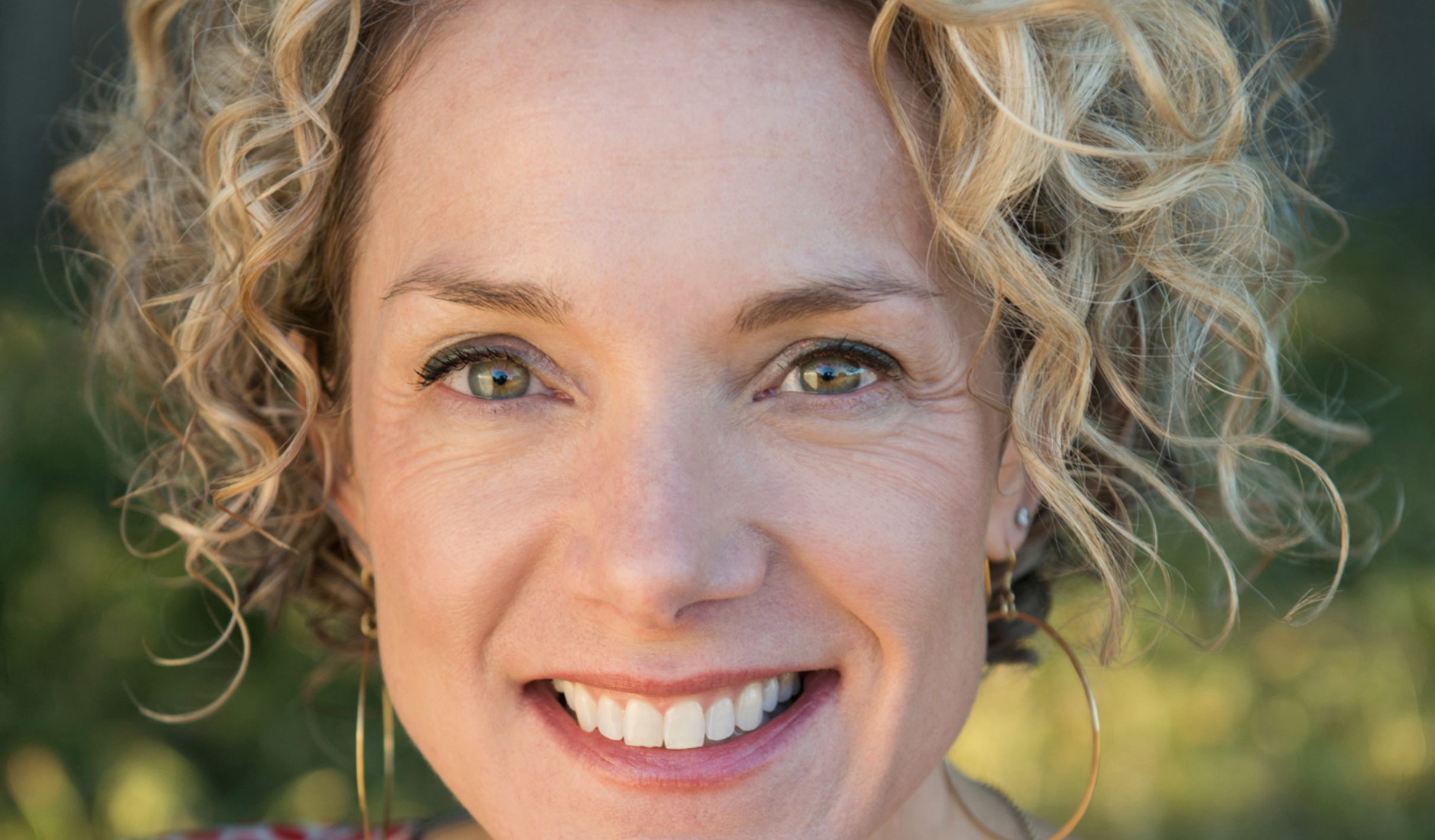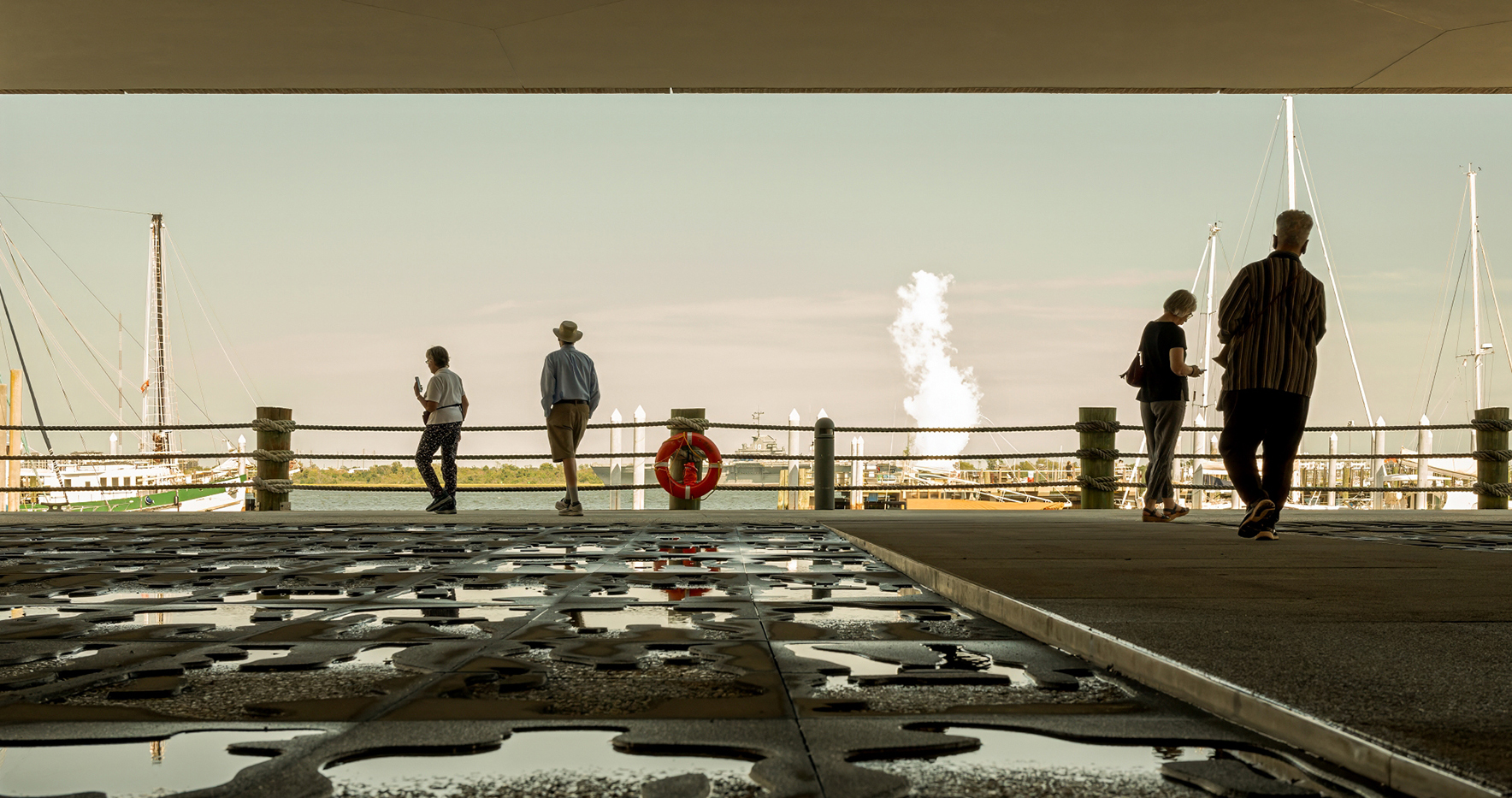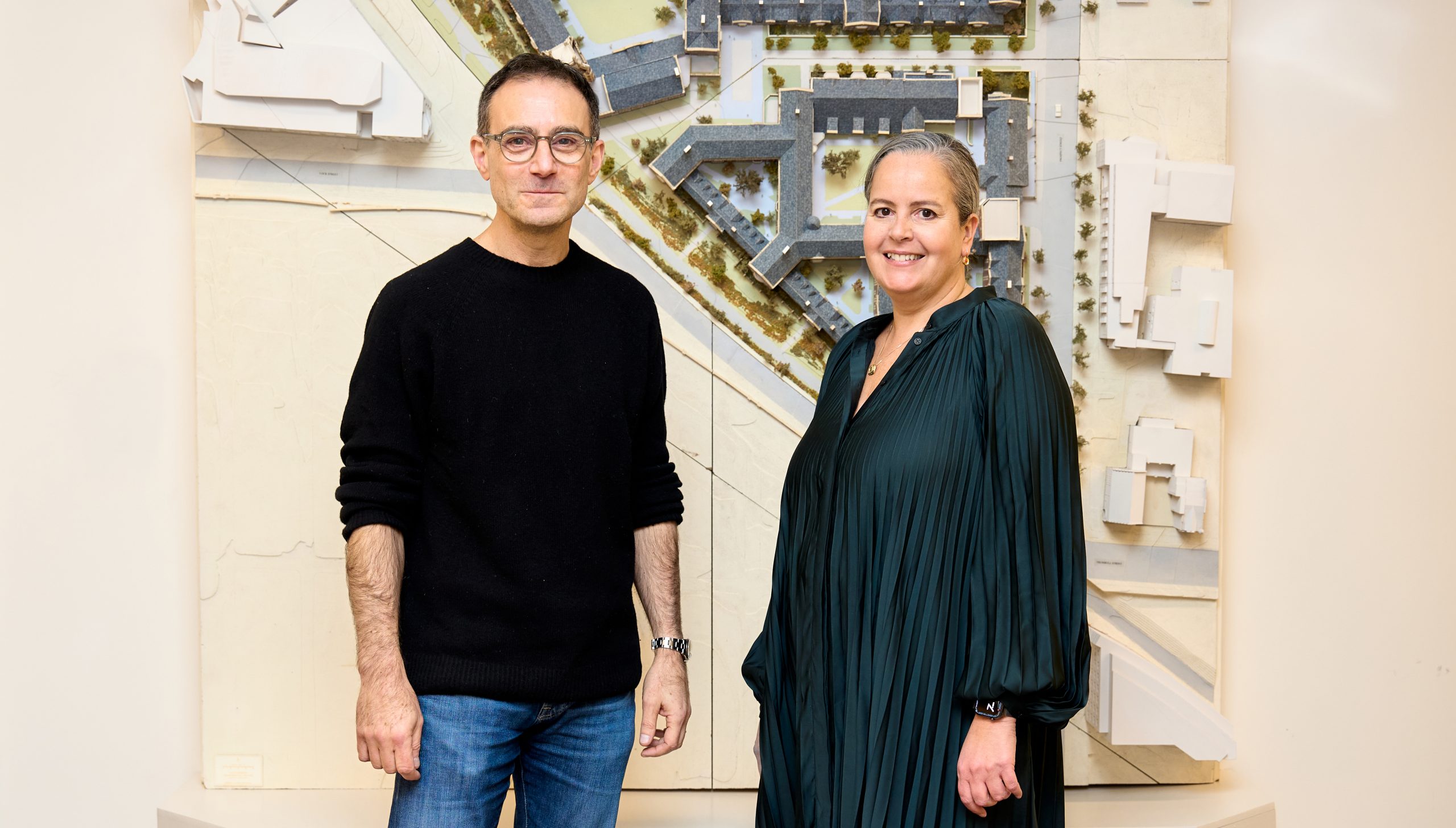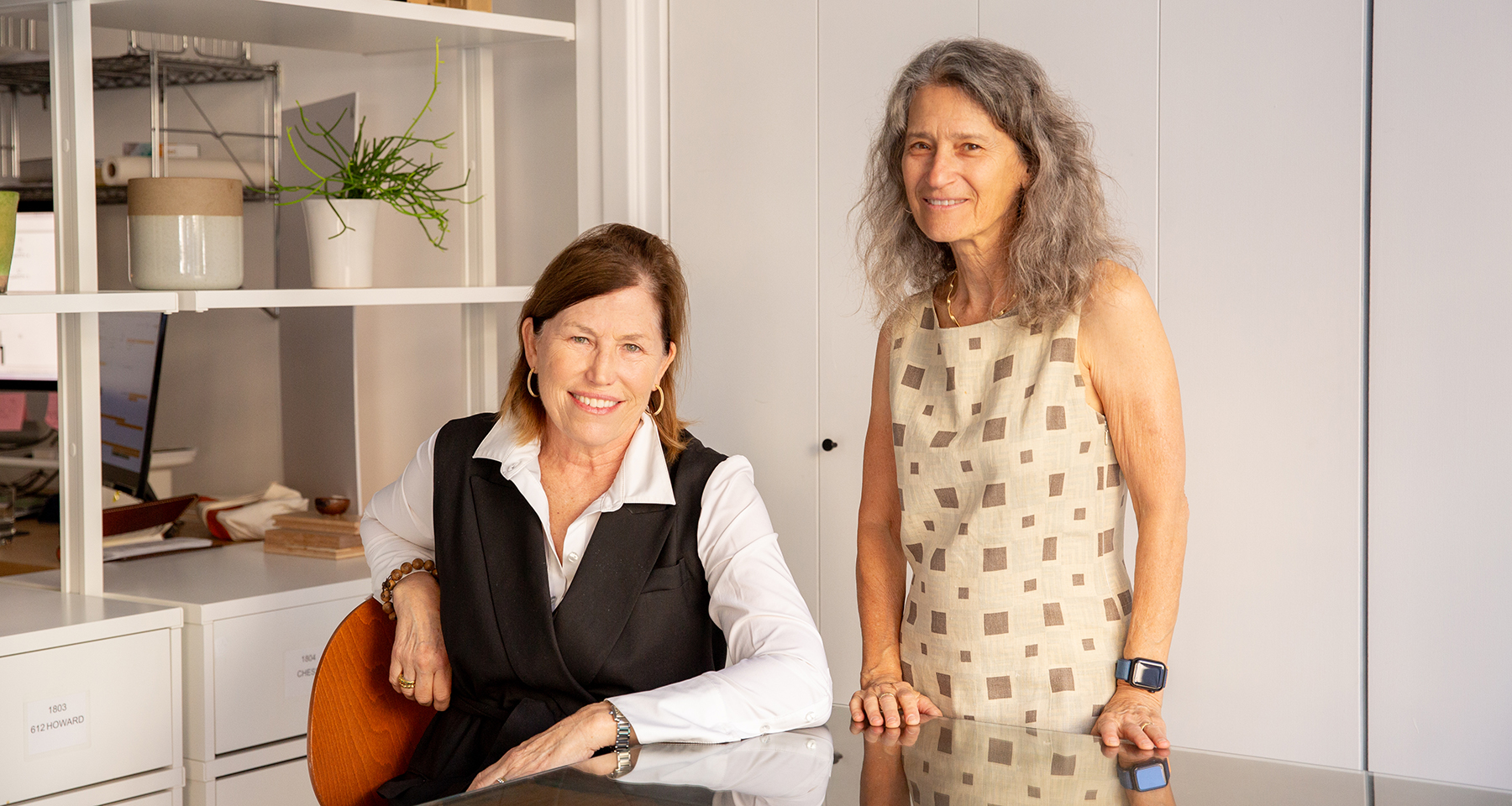Brick & Wonder Profile – Emma Gardner

Emma Gardner is a prolific textile and ceramic tile designer. Over eighteen years, her business has evolved from a distribution model to one based on close collaborations with designers and creatives across industry verticals. We caught up with Emma to hear her story.
Tell us what you do.
My primary work is the design of rugs and cement tiles, based on inspiration I’m gathering all the time. The bulk of my work is custom, working closely with architects and interior designers. Almost everything we do is made to order. Most designs I create have a few lives beyond their original intent, because people often start with one of our designs, and then we adapt it for a specific project by tweaking the color or scale or the design itself. We also deliver designs from scratch, customized for a specific space. Most of the work is for hospitality or residential spaces.
How did you get started?
From my earliest childhood I loved art and graphic design, even wallpaper design. Pattern was always very interesting to me. Over the years I would take art classes. I was born in Japan, but grew up in New York. We always had a lot of Japanese things around the house and I think that permeated my creative consciousness.
I didn’t go to art school – I majored in Literature, History & Philosophy. I took some art classes but I always had this editorial bent and worked initially in journalism. After school, I took a textile design class at FIT and was even considering academia at Columbia.
Conde Nast had a web division called Conde Net. They had a fitness magazine online and eventually I became the managing editor. The textile class ended up being formative, because it made me realize that there is a market for this type of design – an avenue to pursue.
So, I had a good job, my bosses liked me, I was well paid, but I felt the creative urge wasn’t being fulfilled. When I got pregnant with my first daughter – it became a catalyst for making my creativity the center of my career. I knew that if I didn’t, I would be unhappy and resentful later on.
The notion of rugs just popped into my mind. I thought it would be a great vehicle for the kind of textile design I felt drawn to. As I started researching it, I approached an organization that had monitored child labor because I knew that was an issue in the industry. I asked them for advice on finding good mills and they gave a huge list. I started getting samples from them. We found a mill we love, and we’re still with the same mill today.
And you took quite a leap of faith to launch the business…!
I had left my job to start the company, but Conde Nast wanted to hire me back to found another site. My husband, Patrick, and I had made the decision to leave our Brooklyn apartment. We’d both grown up in New York and we’d flirted with the idea of moving to Connecticut, or something different. We sold our apartment out from under ourselves and that gave me the push to say I can’t come back to work because we’re moving! It forced me to make something real of this company.
Patrick realized what we were trying to do was similar to the distribution model for films. Once we’d moved, we decided to set off on a 6 week road trip all around the US. We realized we should pick top markets – eight to ten of them: Washington, Dallas, Miami, Boston, San Diego, etc. We took a couple of 2×2 samples, and 2D printouts of designs. About 3 of every 4 places we visited said they would carry our line. Neither of us had jobs and we had a 14 month old daughter by this point – it was crazy! We planned out a couple of weeks ahead. Sometimes we camped, sometimes we stayed with friends, sometimes hotels – it was great fun.
Each time we found a dealer – we had to go back and make full size rugs to send them. In 2003 we did our first ICFF, and we already had the distribution set up. We did this really bright rug that got a lot of attention, and the press were eager to write about us, because we already had places to send customers.
The rugs are very special – can you tell us more about them?
Our rugs are hand-knotted in Kathmandu, Nepal. We have some mill partners we can work with to manufacture in India too. The material we use is extremely high quality Himalayan, or New Zealand wool, which is hand-spun and naturally dyed in a beautiful artistic process that has been going on for years. Occasionally we also use very high-end Chinese silk which is extremely durable. I love visiting the mill – we work very closely with them.
Can you explain how your business model shifted?
We used to bring our products to market primarily through the dealerships – we were featured in 44 showrooms around the country. Sometimes they were rug dealerships and sometimes furniture showrooms.
But around four or five years ago, the way people shopped changed dramatically. Generally people who buy our rugs are working with a designer in the context of a larger project, but because we don’t carry inventory, we discovered we were losing sales to people who did carry inventory and could ship faster. We realized that our real strength was our high level of engagement on projects – a truly collaborative approach. So we decided to change the structure of the company and press that bet – we would focus on building relationships with designers directly. It was a bit scary at first, but it has been working. When you become truer and truer to yourself, you become more effective.
Anything can spark it. I can see a color or a flower on a walk and it’s almost like I want to eat it!
Tell us a bit about your creative process.
I usually go to Paris in January to Maison Objet, and the Paris Deco Off. That’s the starting point of the year, and I go into this acquisitive mode and gather inspiration. I feel like I’m filling a pot with ideas and then gradually these from the basis of new designs. When I go into this acquisitive mode, it’s really almost like a switch I can flip. I become eyes and a heart. I view everything through that lens. I’m always thinking: “could this be a pattern? Could that be a pattern?”
Anything can spark it. I can see a color or a flower on a walk and it’s almost like I want to eat it! I don’t question it – it’s so obvious what feels like a good idea. I take a lot of pictures and go through them all almost compulsively, drawing out whatever the inspiration was. Palette is very important – I’m always coming up with ideas for palettes – that almost gives me physical energy. I love it so much.
I put things into concept folders, which are like a structure. Then usually Illustrator and Photoshop are my tools – I start to build and build. Like any art form, you step away and come back with fresh eyes. I keep pushing until I think it’s a successful design. Then I put it into a photo-realistic rendering. I show some friends and Patrick and I will look at it. We are ruthlessly editorial. Sometimes I’m proved to be right – something is just right and people like it. Sometimes it’s something I’m less confident about, but when we put it out there it’s a surprise hit. After being in this business for 18 years, so many times we’ll have a design for eight or ten years and we’ll suddenly get three requests for the same design. Colors come and go. Suddenly pink and orange are hot – we have this rug we made in 2003 and we have that fits the zeitgeist.
I’ve grown a lot as a designer having been at it for so long. What’s been nice is that i have found in the last 3 years, the ones interior designers are responding to are the newer ones I’m putting out. It feels great. Because I work alone, it’s gratifying to produce something that is appealing to others.
I put out new designs a batch at a time – some in Spring, some in Fall. I kind of sound them out on Instagram, and we do monthly email blasts to a good list of self-selecting designers. It’s not a huge database, but a devoted one! Usually I put a new design into a photorealistic rendering, not as good as an actual photo but helpful to visualize it. We put it on the website and then order a sample immediately. This way we’re able to gently test the market without overcommitting. Occasionally we order a full size rug to have in stock for a photoshoot or when a design is very popular.
What are some of your favorite projects you’ve worked on?
I can’t say who the client is, but it was a really big project for a wealthy family in India. Some of the most challenging and fun projects are the ones where I go on site and I design something from scratch, specifically for that place. They needed 4 rugs to fill a vast room. I went to India to see the space, talk to the owners, came home and produced all these concepts. The rugs were all silk and they were gorgeous pieces that covered a lot of ground and the client was very happy.
I often like projects that have a palette unlike my natural taste. I liken it to the exercise of method acting. I’m not this person, but if I were… it’s about inhabiting another person’s aesthetic. Another project along those lines was for a couple of friends. They really liked these brutalist browns, muddier tones than I would ever choose. I really had to inhabit their aesthetic and make something beautiful for them. I looked at printmaking artists they liked. I was so happy with the rugs in the end because it pushed my creativity, and the clients were happy – that’s the dream.
Collaboration is super important to your business. Can you tell us more about that?
We have these close working relationships with people, and a lean little studio. Almost all the collaborations we have are good. I find that, usually, creative people who are working creatively tend to be happy. We meet new colleagues all the time and we expand our universe of design.
When I first started we were putting these designs out into the world, and because we were working through dealers, we didn’t have access to the designer or the customer. As I’ve gotten older I’ve realized that I love collaborating with people. I take a very ego-free approach. I don’t care what they want to do, I simply enjoy the process of creating and adapting something. I love working with designers and other creative people, talking about ideas. We loved working with dealers too, but the way we needed to sell changed. It became more personal, and while you don’t have to become best friends with everyone, I do love the turn our business has taken.







